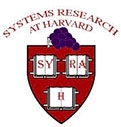6.4 Application-Level Performance
 |
Accuracy and stability metrics capture application-independent, low-level behavior. To understand how Internet-scale coordinate systems can affect application-level behavior, we also examined how Azureus uses them to make higher-level, anycast decisions in one of its common tasks: DHT key lookup. Azureus performs this operation for each tracker announcement, torrent rating lookup and publish, and NAT traversal rendezvous lookup and publish (for tunnelling through NATs).
We modified an Azureus client so that it used network coordinates to optimize lookup delay. Our experiment to evaluate the change in lookup delay first stored a set of keys in the DHT, then looked up each key using four distinct node selection methods, recording the time for the lookup operation. For each key, we ran the methods in random order.
Each method selects one node from a small set, i.e., is performing an anycast: all choices will make logical progress toward the target, some have lower latency than others. Azureus uses Kademlia, which defines the logical distance between two DHT keys as the exclusive-or of their bits [20]. Starting with the logically nearest known nodes to the target: XOR picks the logically nearest node, 2D+H picks the node whose latency as predicted by the 2D+H coordinates is smallest, 4D+H picks the lowest latency node as predicted by the 4D+H coordinates, andRANDOM picks randomly from the set. Each node contacted returns its neighbors that are logically close to the target. This repeats until either a node storing the key is found or the lookup fails. Because Azureus performs DHT lookups iteratively, we were able to experiment with the lookup algorithm through code updates on only a single node.
We plot the distribution of delays from storing 250 keys and performing 2500 lookups in Figure 9. Compared to the XOR method, which always chooses the nearest logical node, the data show that 4D+H reduces lookup delay by 33 percent at the 80th percentile. It is 12 percent faster than the early version of the coordinates, 2D+H, also at the 80th percentile. Because no latency prediction information is currently returned to the caller, the optimization only affects the selection of the first hop. In addition, we were not able to predict latencies to 34 percent of nodes due to version incompatibilities. Both of these factors suggest these improvements are conservative. We excluded lookups that timed out due to dropped UDP messages to avoid dependence on a particular timeout handling mechanism. These data show that using network coordinates can provide a substantial improvement to an application-level process.
Jonathan Ledlie 2007-02-23